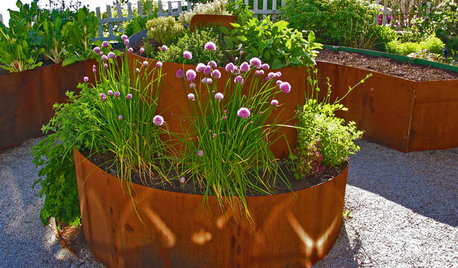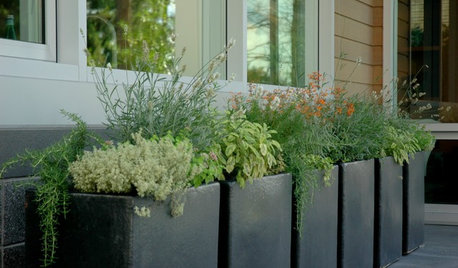critique my potting mix recipe (for sub-irrigated planter)
ydfz
11 years ago
Related Stories

FARM YOUR YARDHow to Grow Vegetables in Containers
Get glorious vegetables and fruits on your patio with a pro’s guidance — including his personal recipe for potting mix
Full Story
SUMMER GARDENINGHow to Grow Basil
Bright color, quick growth and endless uses for cooking make this summer annual a winner in the garden or a pot
Full Story
GARDENING GUIDESGarden Myths to Debunk as You Dig This Fall and Rest Over Winter
Termites hate wood mulch, don’t amend soil for trees, avoid gravel in planters — and more nuggets of garden wisdom
Full Story
FARM YOUR YARD6 Things to Know Before You Start Growing Your Own Food
It takes time and practice, but growing edibles in the suburbs or city is possible with smart prep and patience
Full Story
URBAN GARDENSContainers Make Growing Edibles a Cinch
If life hands you a lack of land, grow lemons — with a few basics, you can proudly reap the fruits, veggies and herbs of your labor
Full Story
GARDENING GUIDES10 Easy Edibles for First-Time Gardeners
Focus on these beginner-friendly vegetables, herbs, beans and salad greens to start a home farm with little fuss
Full Story
GARDENING AND LANDSCAPINGUnexpected Edible Gardens
How to grow your own herbs and vegetables almost anywhere
Full Story
EDIBLE GARDENSHow to Grow Your Own Sweet Summer Crops
This guide will help any gardener get started on growing the freshest warm-season veggies and berries for summer
Full Story
KITCHEN DESIGN9 Questions to Ask When Planning a Kitchen Pantry
Avoid blunders and get the storage space and layout you need by asking these questions before you begin
Full Story
FARM YOUR YARDIf You Have Room for Only One Summer Crop ...
Get an edible that’s long on flavor even if you’re short on space, with a long-time gardener’s favorite picks
Full Story







ydfzOriginal Author
redshirtcat
Related Professionals
Citrus Heights Landscape Architects & Landscape Designers · Saint Louis Park Landscape Architects & Landscape Designers · Wakefield Landscape Contractors · Andover Landscape Contractors · Cary Landscape Contractors · Cerritos Landscape Contractors · Old Saybrook Landscape Contractors · East Hanover Solar Energy Systems · Los Angeles Window Contractors · Matteson Window Contractors · Surfside Window Contractors · Candler-McAfee Fence Contractors · Oro Valley Fence Contractors · Pennsauken Fence Contractors · Ponte Vedra Beach Fence ContractorsPixel_Pepper
ydfzOriginal Author
dickiefickle
ydfzOriginal Author
Pixel_Pepper
ydfzOriginal Author